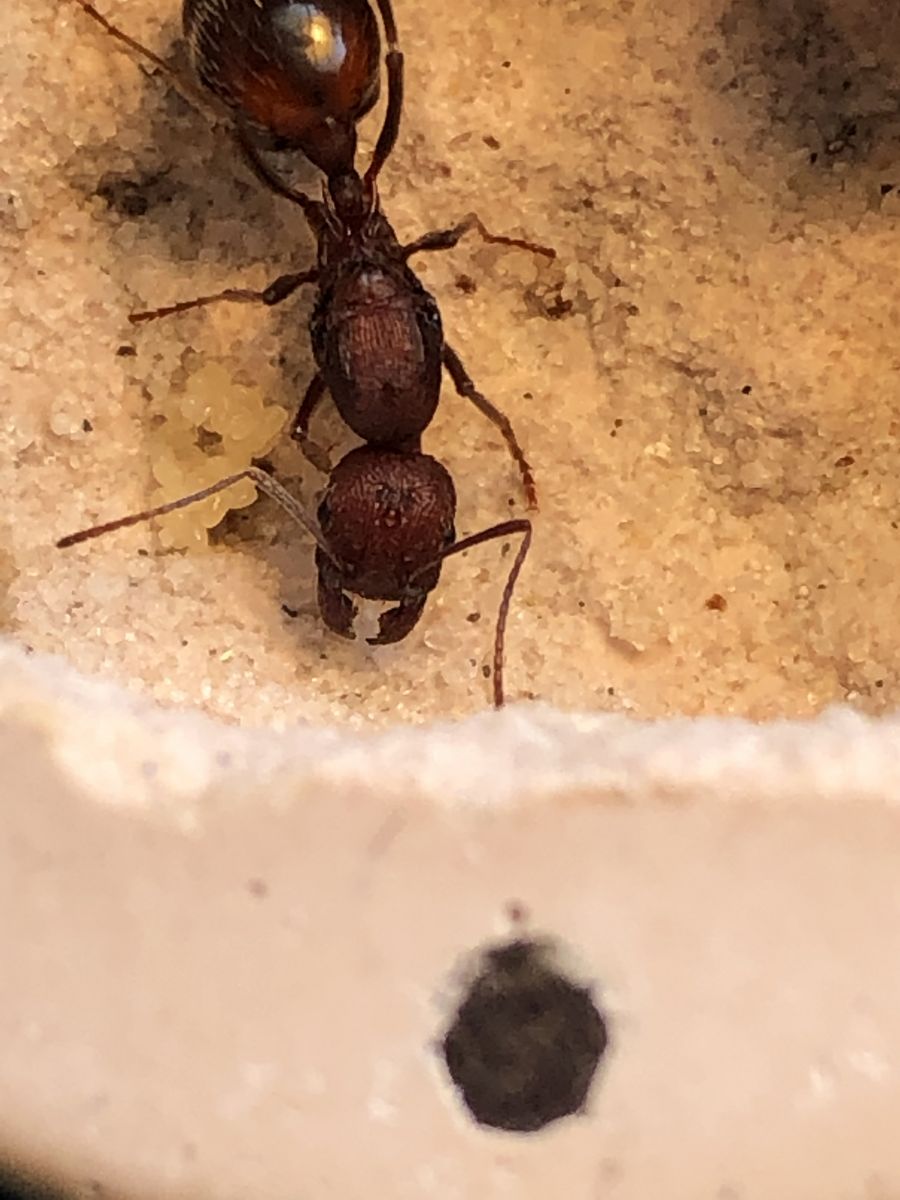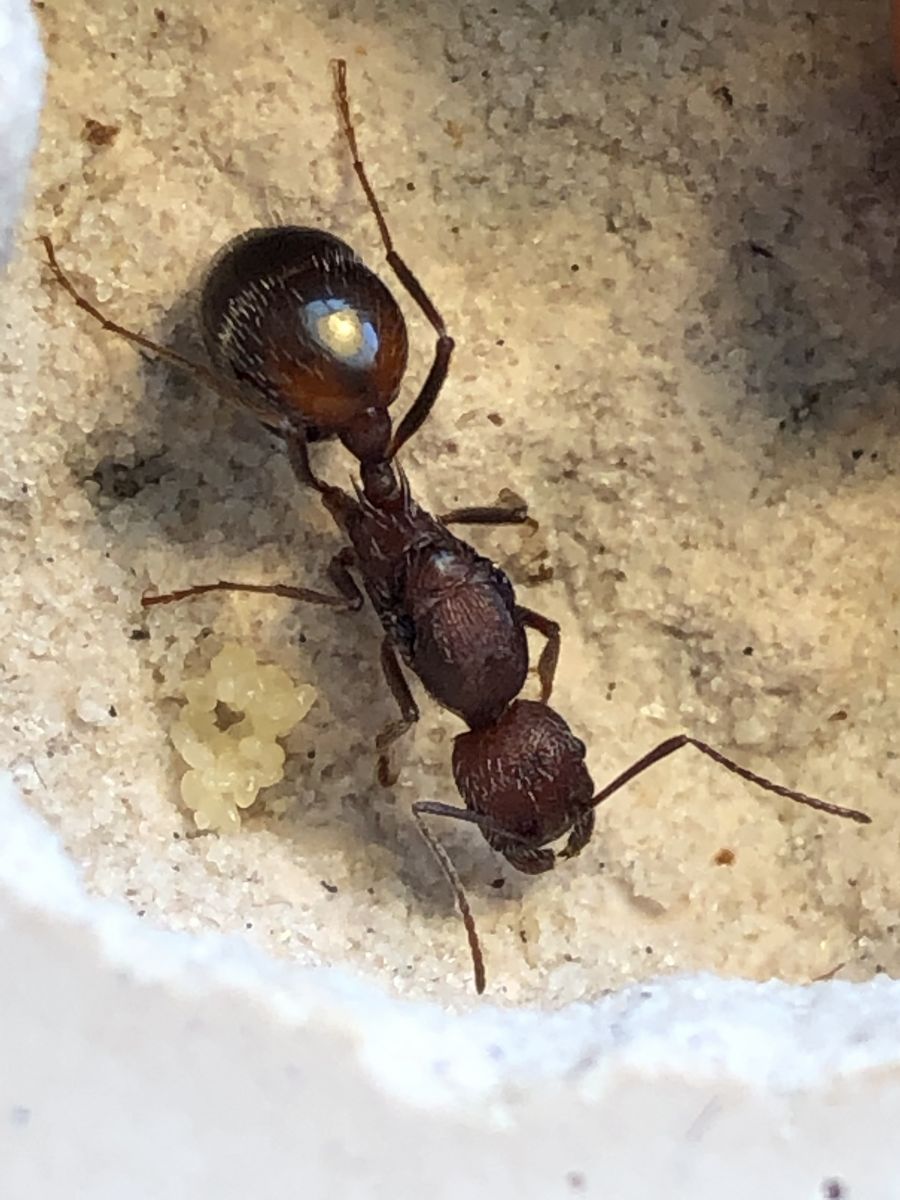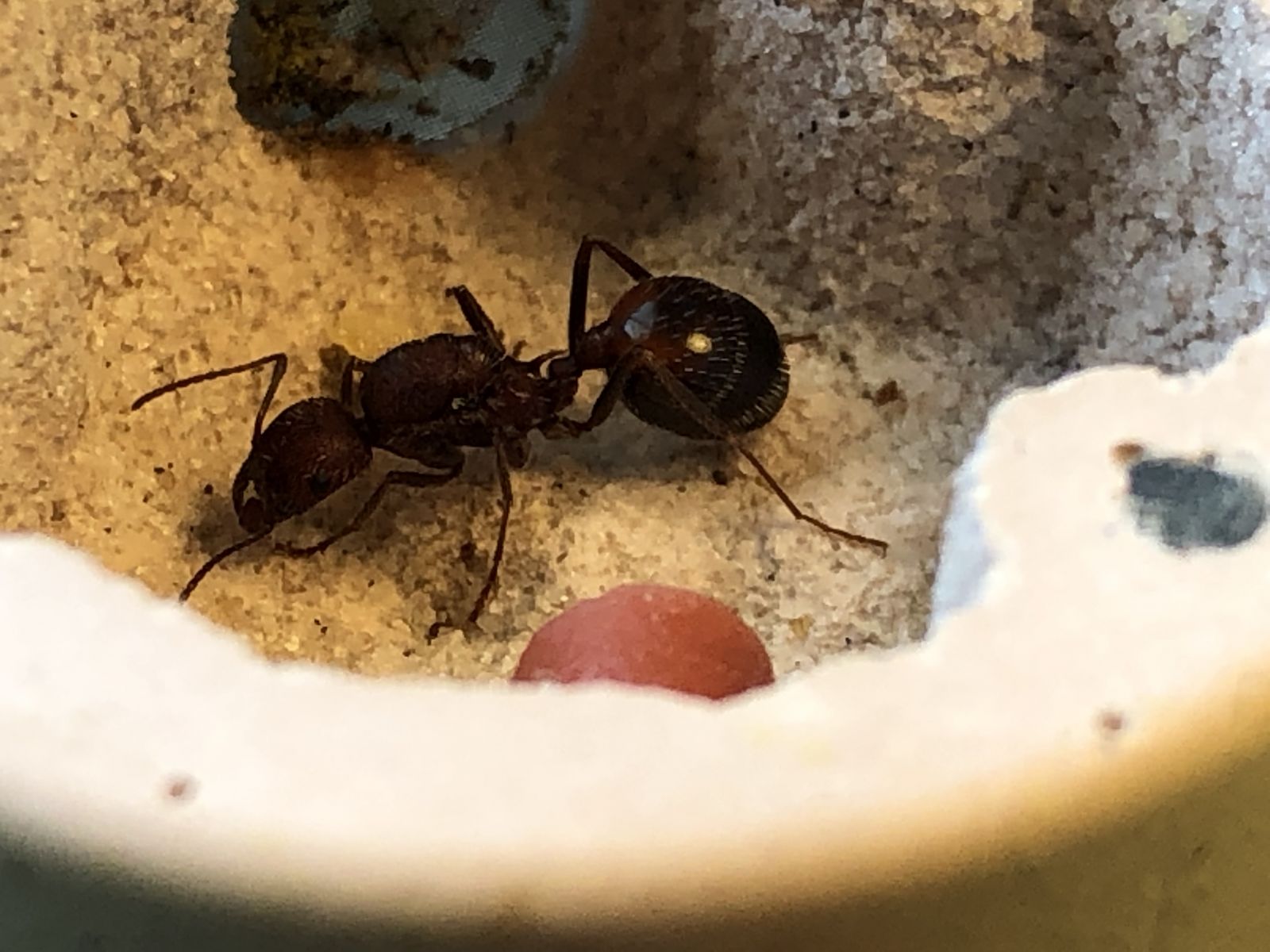Queen 1
1. Location—Collected at Himmel Park in Tucson, AZ USA
2. Date and time—Collected 7.15.19 around 9 or 10pm.
3. Habitat—Urban desert scrub, specifically within a more grassy, well irrigated park.
4. Length—12mm
5. Coloration, hue, pattern and texture—light yellowish brown head and thorax, shiny solid black gaster. Yellow legs that become more brown around the lower leg and feet. Hairs on the head, thorax and gaster.
6. Distinguishing characteristics—one petiole node. A head that is taller than it is wide.
9. Nuptial flight time and date—presumably 7.15.19 in the late evening, as other very similar queens were also spotted/collected.
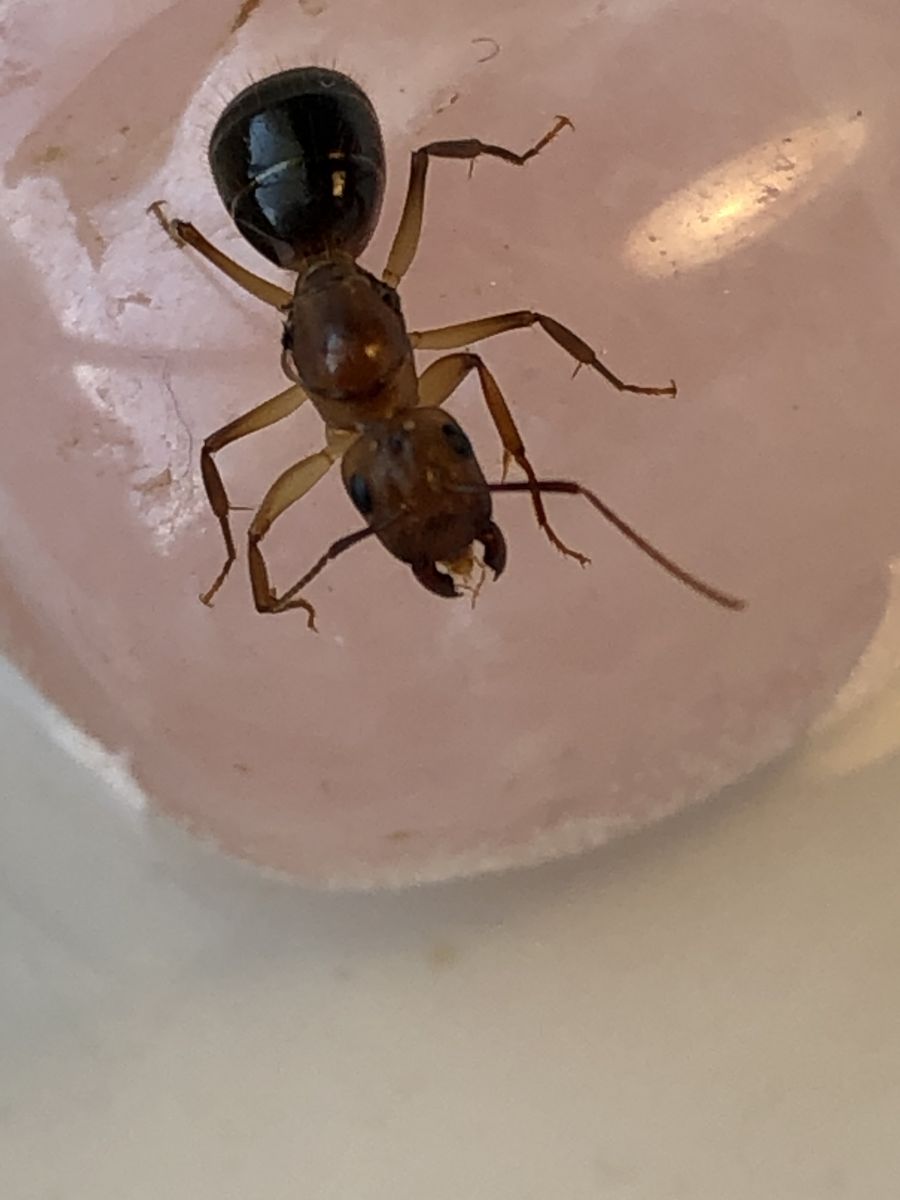
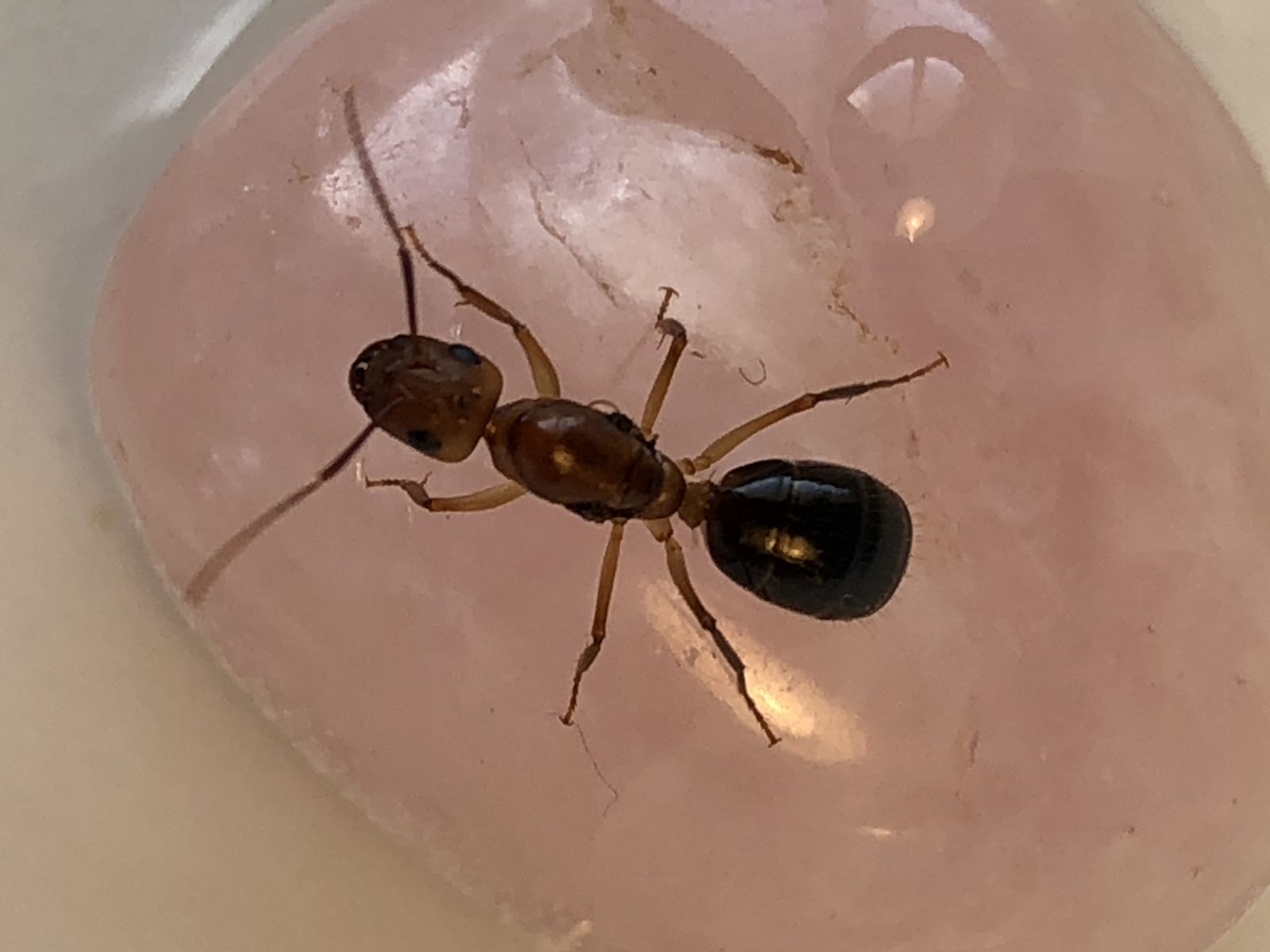
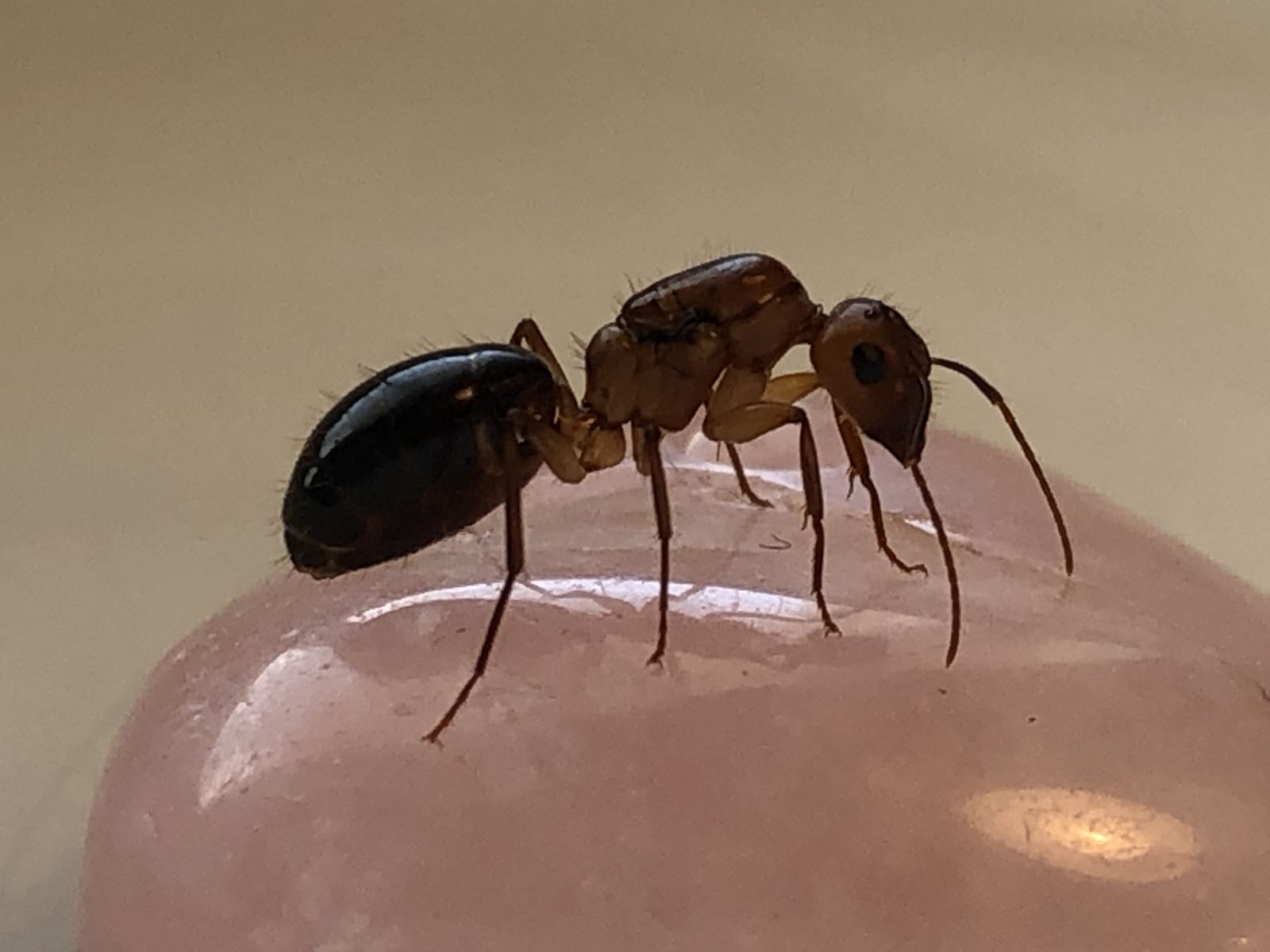
Queen 2
1. Location—Collected at a breakfast restaurant in Tucson, AZ USA
2. Date of collection—Collected 7.15.19 around 8am.
3. Habitat of collection—urban desert scrub habitat
4. Length— 10mm
5. Coloration, hue, pattern and texture—Dark reddish brown, with two spots of lighter color on the left and right of the top of the gaster (near the petiole). White hairs on head, thorax, and gaster. Very small little dimples on head, and indented lines on thorax pointing from head to petiole. Two close-to-horizontal spines on the thorax near the petiole.
6. Distinguishing characteristics—Two close-to-horizontal spines on the thorax near the petiole. Two petiole nodes. Oval-shaped head with large mandibles.
